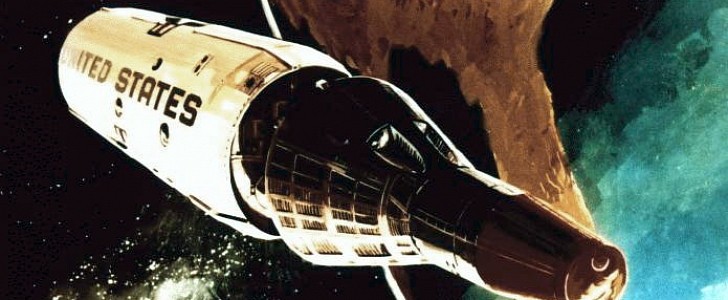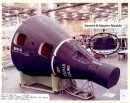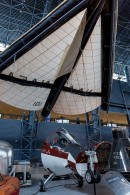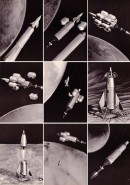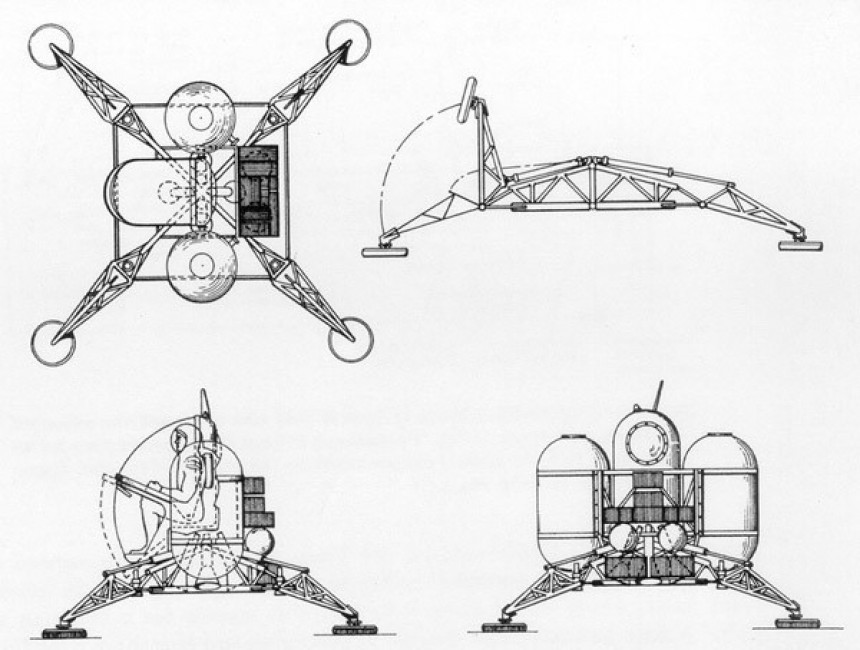The Apollo program is enshrined in our memories as a crowning achievement of all mankind. But people who don't research space junk for a living probably don't know that things may have been profoundly different in even a slightly different timeline.
This is the curious case of a NASA initiative referred to as Advanced Gemini. The little-known project that would have turned the pre-Apollo Gemini program into something very similar to what the Apollo Program eventually became. For those among you whose job isn't to know the ins and outs of the 1960s American space program, Project Gemini was the second in the line of NASA's manned space exploration initiatives active from the late '50s through the early '70s.
Gemini rolled out following the Mercury program (1958-1963) and before the iconic Apollo (1961-1972), with considerable overlap between all three at various points in time. The Gemini spacecraft itself that did see service in our timeline was largely overshadowed in most regards by Apollo.
Even so, it was still a technological marvel. Built by Mcdonnell-Douglas, today a part of Boeing, the Gemini spacecraft was capable of all the vital functions no modern space vehicle can do without. We're talking EVA capability, in-orbit rendezvous and docking via the Agena Target Vehicle, long-duration orbital sustainability, and the capacity to seat at least two crew members.
In truth, Gemini was more like an up-scaled variant of the previous one-manned Mercury spacecraft than its own bespoke spaceship. Even so, it was a substantial enough improvement over Mercury that NASA scientists began to wonder just when the Gemini Spacecraft's talent ceiling would be reached. And so, the Advanced Gemini Proposal was born.
Unlike the Altair Lunar Lander project we showcased a short time ago, a limited amount of legitimate flight hardware was constructed expressly for the purpose of Advanced Gemini. Let's take a look at some of what was on offer. Firstly, it must be noted that not only NASA but the U.S. Military were supremely interested in Advanced Gemini for their own respective purposes.
The U.S. Air Force especially saw great potential in Gemini as a shuttle vehicle of sorts to transport astronauts to and from a series of proposed military space stations, the Manned Orbital Development System, and later the Manned Orbital Laboratory (MOL).
There was even a special boilerplate variant of the Gemini B spacecraft launched atop a Titan IIIC 3C-9 booster rocket for just such a project. In the end, these projects were scrapped in favor of unmanned satellites. As many as three different Gemini Spacecraft, dubbed Gemini Ferrys, were proposed for such a space station mission.
An uncrewed cargo variant, a manned personnel transport, and a hybrid spacecraft with elements of the previous two. These spacecraft would have been capable of launching from either a Titan rocket or an early variant of the Saturn I or IB. Elsewhere, in 1963, NASA put forward a proposal for a greatly enlarged variant of Gemini lovingly named Big Gemini, or Big G.
Had it come to pass, Big Gemini would have been capable of carrying an unprecedented 12 astronauts into low-earth orbit, potentially for transit to the moon for a circumlunar mission the likes of which we wouldn't see until the Apollo 8 mission five years late.
There were even whisperings such a spacecraft could have brought along a lightweight, open-cockpit, single-seater lunar lander vehicle that could be used to make that one small step for man and a giant leap for mankind several years ahead of schedule. Another variant of this design proposal consisted of an enclosed-glass-cockpit, single-seater lunar lander.
This could have been used in the event an Apollo Lunar Excursion Module, LEM, malfunctioned to the point it couldn't leave the Lunar Surface. Alternatively, such a spacecraft could have landed on the moon well ahead of time, allowing stricken astronauts to camp out with extra food, fuel, and supplies while awaiting rescue.
But of all these proposed and ultimately canceled Gemini Projects, only one ever had genuine hardware built for it. The Gemini Paraglider. That's right, under this scheme, an Advanced Gemini spacecraft would have been able to re-enter Earth's atmosphere as normal, then proceed to deploy a large paraglider type device to wind-sail back to the surface using skids derived from the X-15 Program.
Today, the only prototype from this initiative is on display at the Steven Udvar-Hazy Center in Chantilly, Virginia, if you'd like to marvel at it for yourself.
Gemini rolled out following the Mercury program (1958-1963) and before the iconic Apollo (1961-1972), with considerable overlap between all three at various points in time. The Gemini spacecraft itself that did see service in our timeline was largely overshadowed in most regards by Apollo.
Even so, it was still a technological marvel. Built by Mcdonnell-Douglas, today a part of Boeing, the Gemini spacecraft was capable of all the vital functions no modern space vehicle can do without. We're talking EVA capability, in-orbit rendezvous and docking via the Agena Target Vehicle, long-duration orbital sustainability, and the capacity to seat at least two crew members.
Unlike the Altair Lunar Lander project we showcased a short time ago, a limited amount of legitimate flight hardware was constructed expressly for the purpose of Advanced Gemini. Let's take a look at some of what was on offer. Firstly, it must be noted that not only NASA but the U.S. Military were supremely interested in Advanced Gemini for their own respective purposes.
The U.S. Air Force especially saw great potential in Gemini as a shuttle vehicle of sorts to transport astronauts to and from a series of proposed military space stations, the Manned Orbital Development System, and later the Manned Orbital Laboratory (MOL).
An uncrewed cargo variant, a manned personnel transport, and a hybrid spacecraft with elements of the previous two. These spacecraft would have been capable of launching from either a Titan rocket or an early variant of the Saturn I or IB. Elsewhere, in 1963, NASA put forward a proposal for a greatly enlarged variant of Gemini lovingly named Big Gemini, or Big G.
Had it come to pass, Big Gemini would have been capable of carrying an unprecedented 12 astronauts into low-earth orbit, potentially for transit to the moon for a circumlunar mission the likes of which we wouldn't see until the Apollo 8 mission five years late.
This could have been used in the event an Apollo Lunar Excursion Module, LEM, malfunctioned to the point it couldn't leave the Lunar Surface. Alternatively, such a spacecraft could have landed on the moon well ahead of time, allowing stricken astronauts to camp out with extra food, fuel, and supplies while awaiting rescue.
But of all these proposed and ultimately canceled Gemini Projects, only one ever had genuine hardware built for it. The Gemini Paraglider. That's right, under this scheme, an Advanced Gemini spacecraft would have been able to re-enter Earth's atmosphere as normal, then proceed to deploy a large paraglider type device to wind-sail back to the surface using skids derived from the X-15 Program.
Today, the only prototype from this initiative is on display at the Steven Udvar-Hazy Center in Chantilly, Virginia, if you'd like to marvel at it for yourself.
